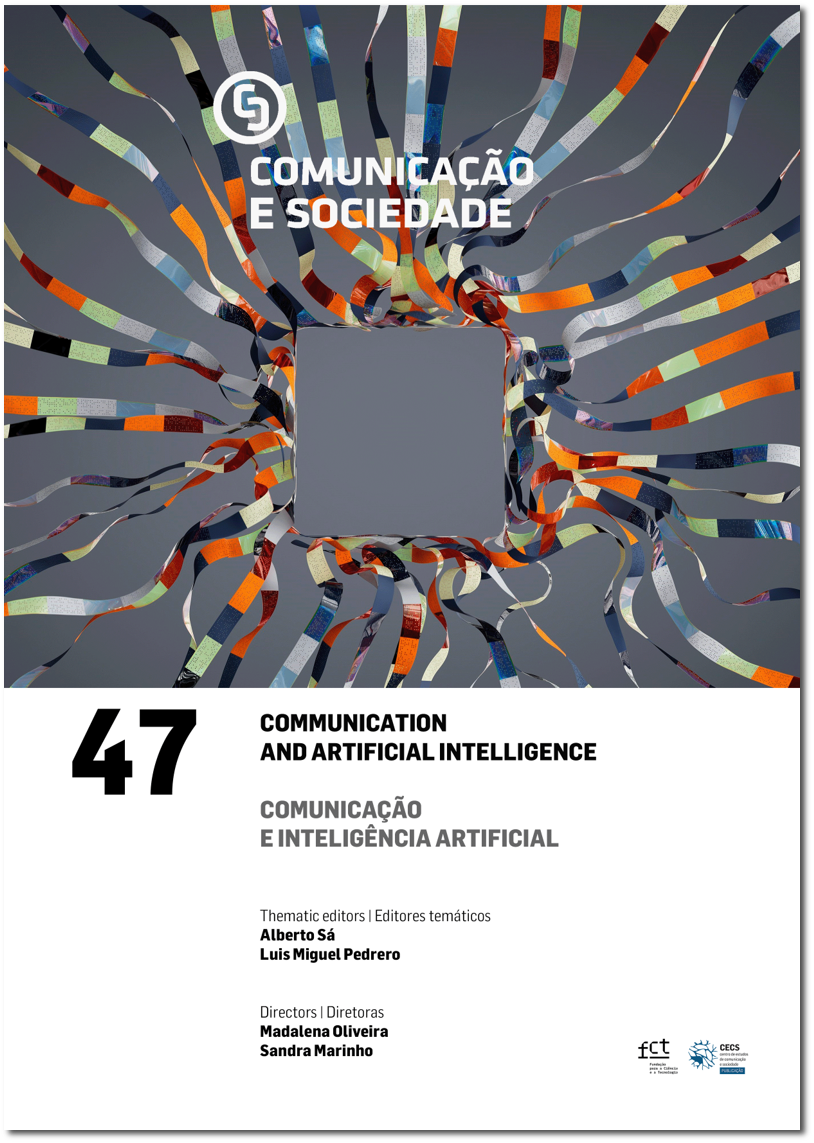The “Fantastic” (Re)Construction of the Past: An Analysis of Memory and Artificial Intelligence in the Series Fantástico — 50 Anos
DOI:
https://doi.org/10.17231/comsoc.47(2025).6191Keywords:
memory, television, artificial intelligence, FantásticoAbstract
This study analyses how artificial intelligence serves as a mediator in the reconstruction of historical narratives in television journalism and examines the symbolic and ethical impacts this use has on collective memory. To this end, the study analyses the first episode of the series Fantástico — 50 Anos, which uses artificial intelligence to reconstruct the inaugural programme lost in a fire in 1976. In addition to technological recreations, the episode’s narrative incorporates memories and testimonials from people directly involved at the time, exploring the links between individual and collective memory. The overall objective is to understand how artificial intelligence serves as a mediator in the preservation and re-signification of historical narratives, assessing its relevance in terms of simplicity, practicality, and symbolic impact in the construction of collective memory. The methodology employed is content analysis, complemented by a theoretical approach based on authors such as Halbwachs, Pollak, Huyssen, Beiguelman, and Scolari, who discuss the dynamics of memory, forgetting, and digital technologies. The results indicate that, although artificial intelligence is a tool for simulating and recreating the past, its performance depends on a narrative structure that articulates human testimonies and historical contexts to resonate emotionally with the audience. In addition, we found that recreations promote both an affective reconnection with the past and a sense of strangeness resulting from the artificiality derived from simulations. This study contributes to the debate on the use of digital technologies in television journalism and their impacts on the preservation and re-signification of memory.
Downloads
References
Barbeiro, H., & Lima, P. R. (2002). Manual de telejornalismo: Os segredos da notícia na TV. Campus.
Barbizan, S. N. (2021). Jornalismo em vídeo gerado por inteligência artificial: Narrativas e credibilidade [Tese de doutoramento. Pontifícia Universidade Católica do Rio Grande do Sul]. TEDE. https://tede2.pucrs.br/tede2/handle/tede/9555
Bardin, L. (2011). Análise de conteúdo (L. A. Reto & A. Pinheiro, Trads.). Edições 70. (Trabalho original publicado em 1977)
Beiguelman, G. (2021). Políticas da imagem: Vigilância e resistência na dadosfera. Ubu Editora.
Bressan Júnior, M. A. (2017). A memória afetiva e os telespectadores: Um estudo do Canal Viva [Tese de doutoramento, Pontifícia Universidade Católica do Rio Grande do Sul]. TEDE. https://tede2.pucrs.br/tede2/handle/tede/7407
Bressan Júnior, M. A. (2019). Memória teleafetiva. Insular.
Bucci, E. (2019). A superindústria do imaginário: Como o capitalismo transforma o olhar. Autêntica Editora.
Café Filosófico CPFL. (2024, 19 de maio). Café filosófico | A era das Ias: Memórias, arquivos e apagamentos | 19/05/2024 [Vídeo]. YouTube. https://www.youtube.com/watch?v=CtnKXk9bAlo
Eco, U. (1984). Viagem na irrealidade cotidiana (A. F. Bernardini & H. F. de Andrade, Trads.). Nova Fronteira.
Globoplay. (2023, 6 de agosto). Fantástico [Série de TV]. Rede Globo. https://globoplay.globo.com/v/11843049/
Halbwachs, M. (2006). A memória coletiva (L. T. Benoir, Trad.). Centauro. (Trabalho original publicado em 1992)
Huyssen, A. (2004). Seduzidos pela memória: Arquitetura, monumentos, mídia. Aeroplano.
Mori, M. (2012). O vale estranho (K. MacDormann & N. Kageki, Trads.). IEEE Robotics & Automation, 19(2), 98–100.
Motta, L. G. (2013). Análise crítica da narrativa. Editora Universidade de Brasília.
Pollak, M. (1992). Memória e identidade social. Estudos Históricos, 5(10), 200–212.
Scolari, C. (2008). Hipermediações: Elementos para uma teoria da comunicação digitalinterativa. Gedisa.
Wolton, D. (1996). Elogio do grande público: Uma crítica da televisão (J. Siqueira, Trad.). Ática. (Trabalho original publicado em 1990)
Downloads
Published
How to Cite
Issue
Section
License
Copyright (c) 2025 Mario Abel Bressan Júnior, Ana Paula Bazi

This work is licensed under a Creative Commons Attribution 4.0 International License.
Authors own the copyright, providing the journal with the right of first publication. The work is licensed under a Creative Commons Attribution 4.0 International License.












